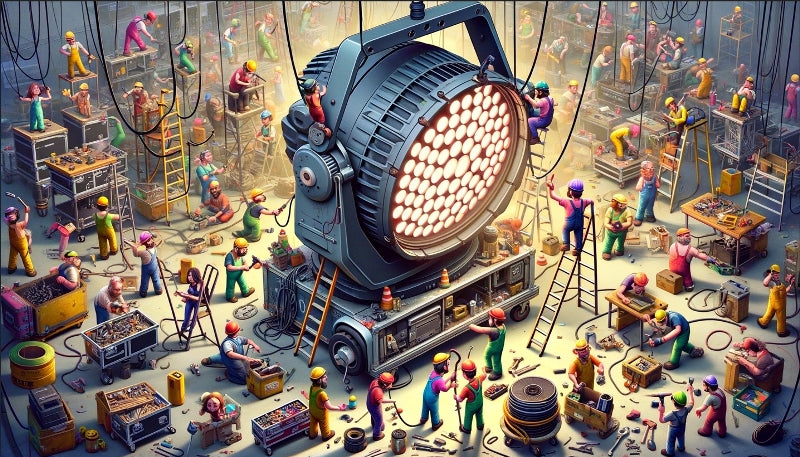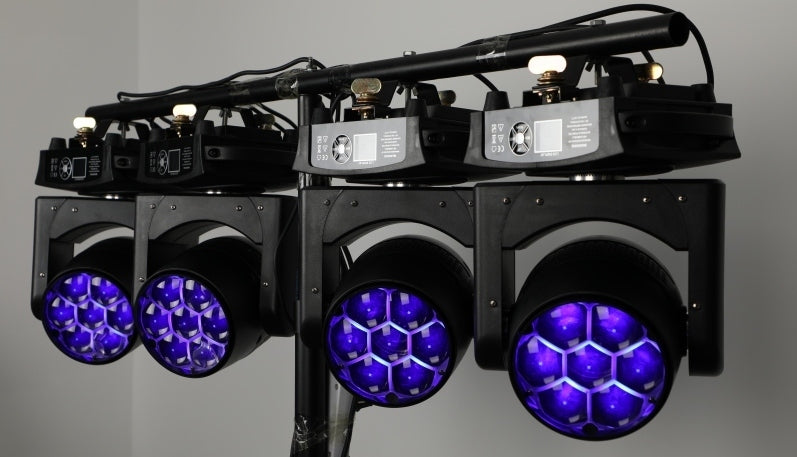How challenging is it to repair broken lighting equipment?

In times of difficulty for the entertainment industry, repairing stage lighting equipment has become a crucial way to save costs. Whether it's moving lights or LED lighting equipment, many are seeking training on maintenance, service, and diagnosing specific faults.
PCBs and Electronic Components
But before we start looking for that tiny faulty component, what other options are there when you're tasked with getting a whole set of lighting equipment, like moving lights or consoles, working again? You've moved beyond checking bulbs, fuses, cables, and the main power supply.
Let's consider some broader factors.
Physical Damage
It could be a cracked casing, sheared fixtures, or simply missing handles, but many things can be fixed at this most basic level—if you can get the replacement parts. These repairs go beyond routine maintenance tasks like changing bulbs or air filters but usually don't require in-depth knowledge of electronics or fault diagnosis. It's broken, it's obvious, and you just need to fit a new part. If the equipment is discontinued and parts are unavailable or expensive, consider using donor parts.
The key skill needed here is the ability to identify the damaged part and fit an undamaged one. Related to this is the practice of making one working item out of several damaged ones. A recent example: I turned twelve unusable CM Lodestar 1T motors into eleven working motors, certified by a third-party LOLER testing body and reintroduced into the rental stock. Some enjoy acquiring a large batch of old, damaged luminaires and parts from a rental company to cheaply gain some moving lights.
However, be wary: rental companies aren't in the habit of selling anything that still holds value for them. This means there's a significant risk in bulk-buying in hopes of achieving the best outcome.
Board or Assembly Replacement and Similar Repairs
Such repairs are quite common for in-house technicians in theatres or rental companies. The issue might be a faulty sensor, ballast, power supply, or a specific "board" used for a particular function. The diagnostic approach usually involves identifying the fault based on symptoms and narrowing it down to a sub-component of the equipment. This is often verified by substitution (for example, swapping in a working part) and repaired by fully replacing the faulty assembly or PCB. This working part could be newly purchased from the manufacturer or from a donor. In this case, a good tool to have on hand is a known good working part, like a sensor or PCB taken from another luminaire. However, beware of misdiagnosing the source of the problem and inadvertently burning through a bunch of working parts by installing them into faulty equipment.
The key skills required are a general understanding of the equipment's function, designing and performing appropriate tests and verifications to identify the faulty part, and installing the replacement. This is a common level for technicians I work with and teach, especially for those who have a good overall technical understanding but might not yet be confident with specific equipment, typically applicable for moving lights and other complex devices.
Component-Level Repairs
This skill is less common and limited to a few specialists, and for good reasons. First, the repair might ultimately be as simple as replacing a single faulty component, but identifying that component requires a high level of skill and, more importantly, time. Time multiplied by a high skill level usually equals high cost. This is why, in the stage lighting business, board or assembly replacement is the norm, akin to practices in the modern automotive repair industry. Secondly, assemblies and PCBs are actually relatively inexpensive compared to the potential labor costs and the cost of lost usability. Opting to replace the entire PCB with a working one without spending time identifying the individual component is a quick way to get the equipment back up and running. The wait time for parts delivery is roughly the same, but the diagnostic and installation time is usually significantly reduced.
So, why would you even attempt repairs at the component and PCB level?
If you have time but limited funds, a "cheap" repair might be appealing. The idea that a single component, which might have cost thousands when new, can be repaired for a fraction of the cost is enticing. However, this approach requires a deep understanding of electronics and the patience to meticulously diagnose and repair at the micro-level. This is not for everyone, but for those with the skills and time, it can be a worthwhile endeavor, especially in situations where replacement parts are scarce or prohibitively expensive.





Dejar un comentario